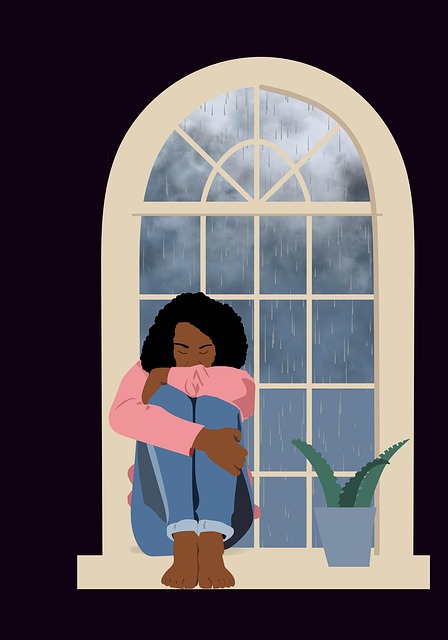Lone Tree Phobias Therapy leverages the RFM framework (Recovery, Flexibility, Mastery) to build mental resilience. This approach combines self-awareness exercises, emotional healing tools, and controlled exposure to trees for those with phobias. Through recovery, individuals challenge and overcome their fears; flexibility teaches adaptation in tree-present situations; and mastery empowers control over emotions and actions. RFM techniques enhance confidence, improve communication, and promote mental health awareness beyond therapy sessions. Lone Tree Phobias Therapy, integrated into Mental Health Policy Advocacy, helps citizens navigate stressors and improves population mental health outcomes. Public campaigns encourage early help-seeking for these often-overlooked phobias, facilitating effective Cognitive Behavioral Therapy (CBT) solutions and robust public mental health support.
“Unleash your inner strength with an exploration of RFM (Resilience, Flexibility, and Mastery) techniques and their transformative power in building resilience. This article guides you through a comprehensive journey, starting with understanding the core concepts of RFM and its role in fostering adaptability. We delve into identifying personal phobias and triggers, offering strategies for creating tailored resilience exercises.
Learn practical applications, especially focusing on overcoming lone tree phobias through targeted therapy, providing insights to enhance your well-being.”
- Understanding RFM and Its Role in Resilience Building
- Identifying Individual Phobias and Triggers
- Creating Personalized Resilience Exercises
- Practical Applications of RFM Techniques
- Overcoming Lone Tree Phobias Through Targeted Therapy
Understanding RFM and Its Role in Resilience Building

Resilience is the ability to adapt and bounce back from adversity, and it’s a crucial aspect of mental health and well-being. That’s where RFM (Recovery, Flexibility, and Mastery) comes in as a powerful framework for resilience building. This approach helps individuals navigate life’s challenges by fostering self-awareness exercises and emotional healing processes. By understanding one’s triggers and developing coping mechanisms, people can transform their reactions to stressful situations, essentially changing their response from one of fear or avoidance to a more balanced and controlled reaction.
For instance, someone with a Lone Tree Phobias Therapy might benefit from RFM techniques. Recovery involves recognizing and challenging the fear, flexibility focuses on adapting to the presence of the tree, and mastery entails taking control over one’s emotions and actions. This structured method enables individuals to confront their fears in a safe environment, promoting mental health awareness and empowering them to face similar challenges beyond therapy sessions.
Identifying Individual Phobias and Triggers

Many individuals experience specific phobias related to lone trees, which can significantly impact their daily lives and well-being. Identifying these fears is a crucial step in the healing process. Through introspection and self-awareness exercises, one can uncover personal triggers and the underlying causes of their phobia. This may involve exploring past experiences, memories, or traumatic events associated with trees or being alone in natural settings.
In therapy sessions focusing on lone tree phobias, empathy building strategies are employed to create a safe space for individuals to express their feelings. By fostering understanding and connection, therapists can help clients challenge negative beliefs and associations. Additionally, self-esteem improvement techniques and activities that enhance self-awareness can empower individuals to confront and overcome their fears, leading to greater resilience and a more fulfilling life.
Creating Personalized Resilience Exercises

Building resilience is a personalized journey, and one effective approach is to create tailored exercises that address individual needs. Lone Tree Phobias Therapy offers a unique perspective on this, recognizing that every person’s path to resilience is distinct. The first step involves self-reflection and awareness; individuals identify their triggers, fears, and areas where they seek growth. This introspection serves as a foundation for designing specific exercises aimed at confronting and overcoming challenges.
For instance, someone struggling with social anxiety might engage in compassion cultivation practices to enhance self-kindness and reduce self-criticism. In contrast, an individual dealing with past traumas could benefit from trauma support services offering specialized techniques to process and release traumatic memories. These personalized strategies empower individuals to take control of their emotional well-being and foster a sense of confidence boosting, ultimately leading to a more resilient mindset.
Practical Applications of RFM Techniques

The Real-Life Applications of RFM (Resilience, Flexibility, and Mastery) techniques are vast and varied, offering a powerful toolkit for enhancing mental health and overall well-being. This therapeutic approach, often employed in Lone Tree Phobias Therapy, goes beyond traditional talk therapy by integrating practical exercises designed to build resilience. Through RFM, individuals learn to confront and overcome challenges, fostering a sense of empowerment and control over their emotional and psychological states.
One key advantage lies in its ability to improve confidence-boosting strategies. By encouraging clients to face their fears in controlled environments, therapists help them develop effective coping mechanisms. This is particularly beneficial for those dealing with specific phobias or anxiety disorders. Moreover, RFM can be integrated into Mental Health Policy Analysis and Advocacy efforts by providing individuals with the tools to navigate life’s stressors, thereby contributing to improved mental health outcomes at a population level through better equipped and resilient citizens. Effective communication strategies are also honed during these exercises, allowing participants to articulate their experiences and needs more effectively, which is crucial for seeking support and advocating for one’s mental health.
Overcoming Lone Tree Phobias Through Targeted Therapy

Lone tree phobias are a common yet often overlooked form of specific phobia that can significantly impact an individual’s quality of life. These fears, usually stemming from past traumatic experiences or intense anxiety, manifest as an overwhelming fear of being alone in open or wooded areas. However, with targeted therapy, it’s possible to overcome these phobias and reclaim control over one’s life.
Cognitive Behavioral Therapy (CBT), a well-established approach, has proven effective in treating lone tree phobias. Through carefully structured exercises, individuals learn to challenge their fears and change the way they perceive and respond to their environment. This process involves gradual exposure to the feared stimulus, starting from mild anxiety triggers and progressively moving towards more intense scenarios. By engaging in these exercises under professional guidance, one can enhance resilience, reduce anxiety symptoms, and even prevent depression or other mental health issues that may arise from prolonged isolation or fear. Public awareness campaigns focused on Mental Health Awareness play a crucial role in promoting understanding and encouraging individuals to seek help early, thereby facilitating a smoother path towards recovery.
Resilience is a powerful tool in overcoming phobias, particularly lone tree phobias. By understanding RFM (Resilience, Flexibility, and Mastery) and employing tailored resilience-building exercises, individuals can challenge their fears effectively. The article has explored various techniques, from identifying personal triggers to creating personalized exercises, all contributing to enhanced resilience. Targeted therapy for lone tree phobias demonstrates the practicality of RFM in real-world applications, offering hope and a path to recovery for those seeking to conquer their specific fears.














